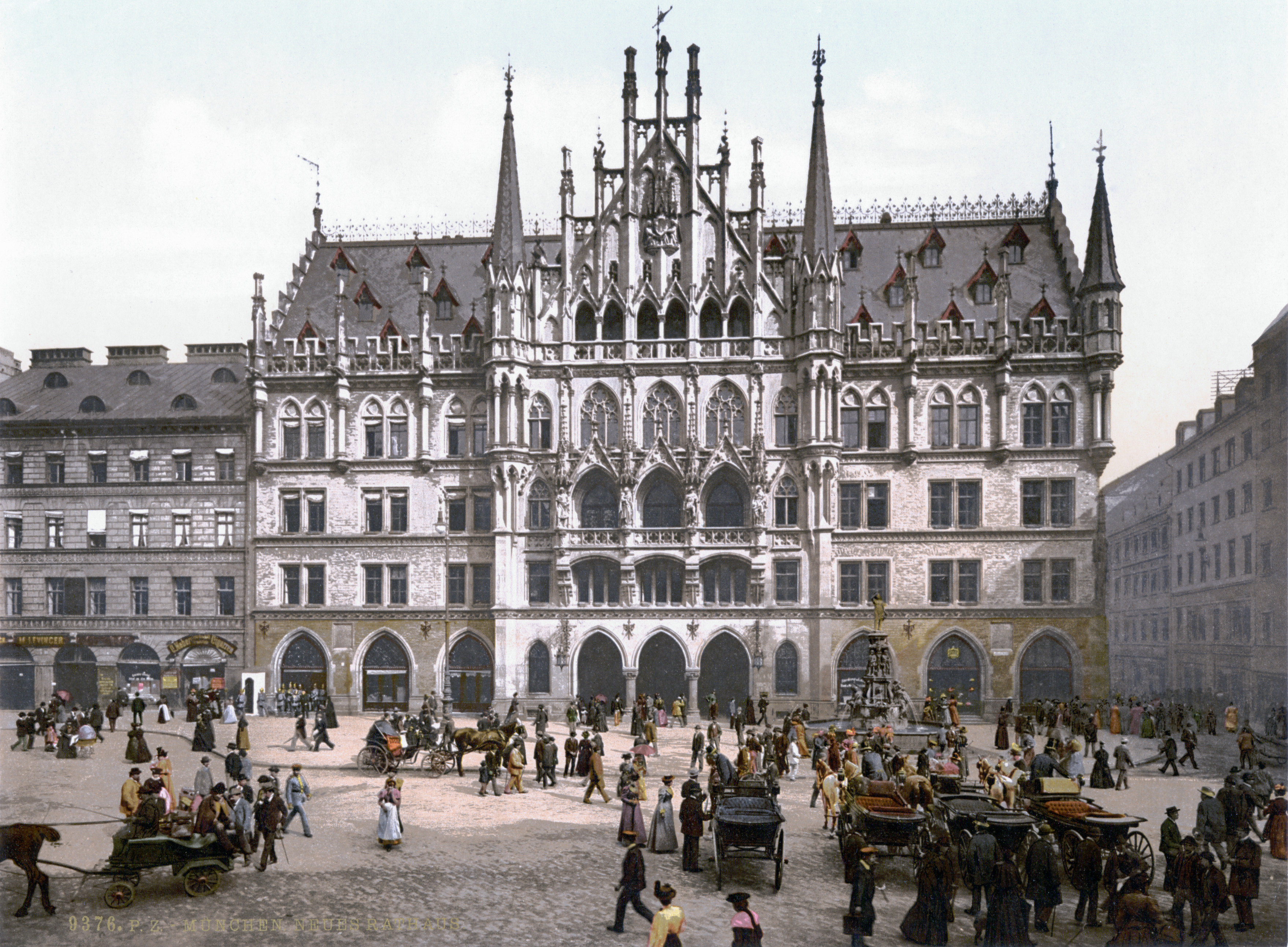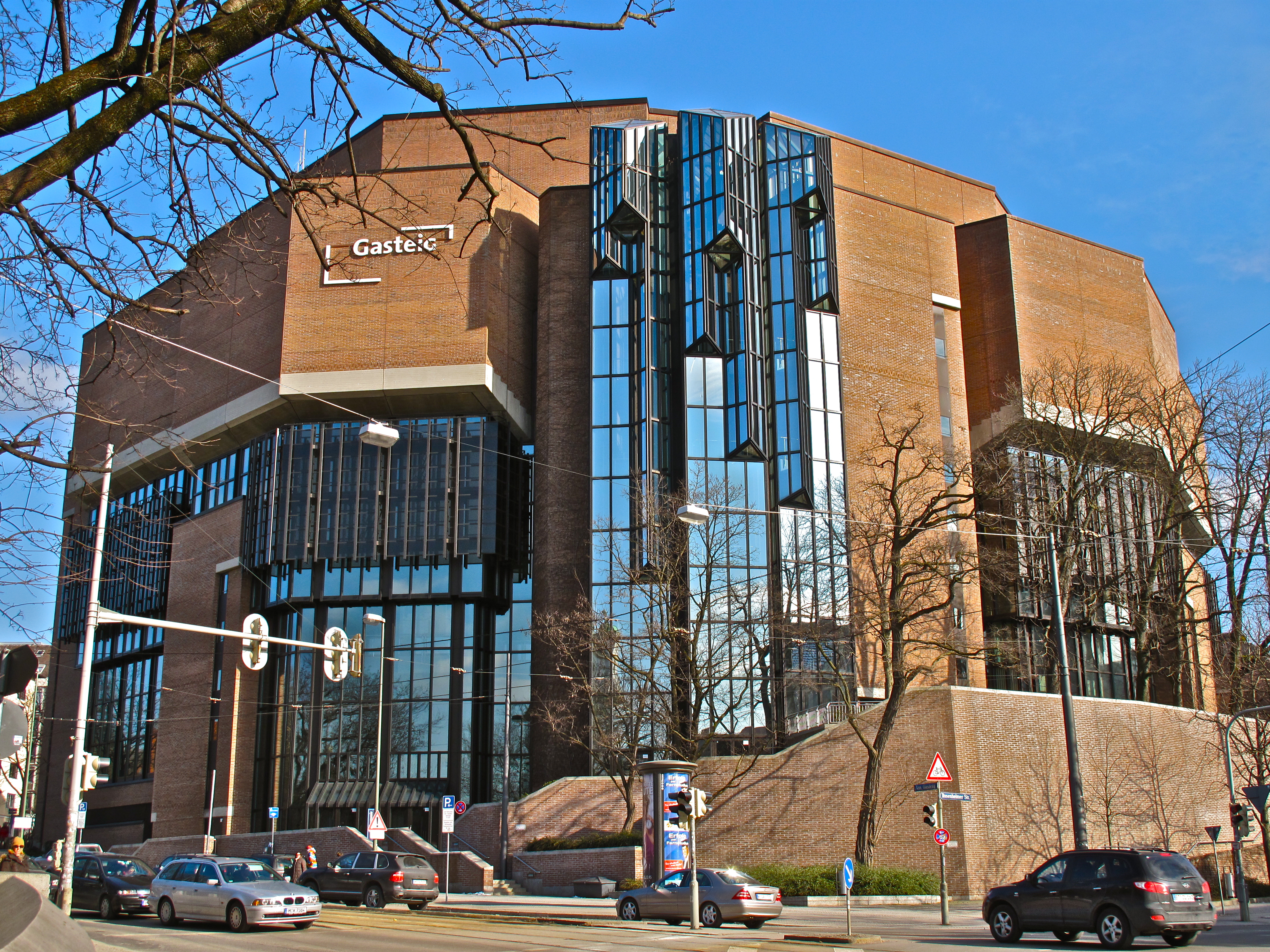|
München
Munich ( ; german: München ; bar, Minga ) is the capital and most populous city of the German state of Bavaria. With a population of 1,558,395 inhabitants as of 31 July 2020, it is the third-largest city in Germany, after Berlin and Hamburg, and thus the largest which does not constitute its own state, as well as the 11th-largest city in the European Union. The city's metropolitan region is home to 6 million people. Straddling the banks of the River Isar (a tributary of the Danube) north of the Bavarian Alps, Munich is the seat of the Bavarian administrative region of Upper Bavaria, while being the most densely populated municipality in Germany (4,500 people per km2). Munich is the second-largest city in the Bavarian dialect area, after the Austrian capital of Vienna. The city was first mentioned in 1158. Catholic Munich strongly resisted the Reformation and was a political point of divergence during the resulting Thirty Years' War, but remained physically unt ... [...More Info...] [...Related Items...] OR: [Wikipedia] [Google] [Baidu] |
New Town Hall (Munich)
The New Town Hall (German: ''Neues Rathaus'') is a town hall at the northern part of Marienplatz in Munich, Bavaria, Germany. It hosts the city government including the city council, offices of the mayors and a small portion of the administration. In 1874 the municipality had left the Old Town Hall for its new domicile. History Inception and construction The decision to construct a new building came due to the lack of space in the Old Town Hall and the adjoining, so-called "Lesser Town Hall" on Petersbergl (destroyed in 1944, not reconstructed). In memory of the bourgeois high season during the Gothic period, the choice fell upon a neo-Gothic design, which allowed an implement an independent architectural accent in contrast to the buildings of the royal family. The north side of the Marienplatz was chosen as the building site, where the house of the Landstände still stood which had been erected by the Bavarian Duke throughout the Middle Ages as a sort of representation ... [...More Info...] [...Related Items...] OR: [Wikipedia] [Google] [Baidu] |
Maxvorstadt
Maxvorstadt ( Central Bavarian: ''Maxvorstod'') is a central borough of Munich, Bavaria, Germany and forms the Stadtbezirk (borough) 3 Maxvorstadt. Since 1992, this borough comprises the former boroughs 5, 6 and 7 (Maxvorstadt-Universität, Maxvorstadt-Königsplatz-Marsfeld and Maxvorstadt-Josephsplatz). Location The borough is next to the north-western part of the Old City. The Englischer Garten is the Eastern border, Schwabing is in the North, Neuhausen-Nymphenburg in the North-West. The borough Schwanthalerhöhe is its south-western neighbor and Ludwigsvorstadt-Isarvorstadt is in the south. The Eastern parts of Maxvorstadt are often mistakenly attributed to the borough of Schwabing. Traffic The Maxvorstadt is drafted as a quadratical grid and is shaped by the north-south axes Schleißheimer Straße and Ludwigstraße; the parallel streets Amalienstraße, Türkenstraße, Barer Straße, Schraudolphstraße, Arcisstraße, Luisenstraße and Augustenstraße run between them. T ... [...More Info...] [...Related Items...] OR: [Wikipedia] [Google] [Baidu] |
Moosach (Munich)
Moosach is the 10th northwestern district of Munich, Bavaria, Germany. It is sectioned in the urban districts Hartmannshofen, Pressestadt and Borstei. It is surrounded by: Feldmoching-Hasenbergl (north), Milbertshofen-Am Hart (east), Neuhausen-Nymphenburg (south), Pasing-Obermenzing (southwest) and Allach-Untermenzing (west). It has a history of 4000 years of human settlement. History and structure An almost uninterrupted chain of prehistoric finds suggests a continuous settlement from 4000 years up to the younger Stone Age. Moosach is thus one of the oldest places around and in Munich. The first documentary mention dates from 4 June 807, and the first church St. Martin was built before 1315. Around 1700 the Röth lime tree, Munich's oldest tree, was planted. In 1717 Elector Max Emanuel built the Fasanerie, originally a forester's lodge for raising pheasants, today a beer garden with 1500 seats in the self-service area and another 200 seats in the serviced area. I ... [...More Info...] [...Related Items...] OR: [Wikipedia] [Google] [Baidu] |
Altstadt-Lehel
Altstadt (Central Bavarian: ''Oidstod'') and Lehel (Central Bavarian: ''Lechl'') are districts of the German city of Munich. Together they form the first borough of the city: Altstadt-Lehel. Location The borough covers the historical area of Altstadt (as defined by the Altstadtring) and the Lehel area, which is attached to Altstadt via the north east. It also covers the Isar in the east and the Englischer Garten as well as Prinzregentenstraße, bordering it in the north. History and Description Altstadt Since the town extension via Ludwig the Bavarian lasting from 1285 until 1347, Altstadt consisted of four quarters and an open locale: *The Kreuzviertel in the north west of Altstadt. Its borders are described roughly as Kaufingerstraße/ Neuhauser Straße in the south and Weinstraße/Theatinerstraße in the east. Located here was the centre of the clergy as there was a particularly high number of monasteries. The Kreuzviertel which was first mentioned via documents on ... [...More Info...] [...Related Items...] OR: [Wikipedia] [Google] [Baidu] |
Allianz Arena
Allianz Arena (; known as Fußball Arena München for UEFA competitions) is a football stadium in Munich, Bavaria, Germany with a 70,000 seating capacity for international matches and 75,000 for domestic matches. Widely known for its exterior of inflated ETFE plastic panels, it is the first stadium in the world with a full colour changing exterior. Located at 25 Werner-Heisenberg-Allee at the northern edge of Munich's Schwabing-Freimann borough on the Fröttmaning Heath, it is the second-largest arena in Germany behind Westfalenstadion in Dortmund. FC Bayern Munich has played its home games at the Allianz Arena since the start of the 2005–06 season. The club had previously played their home games at the Munich Olympic Stadium since 1972. 1860 Munich previously had a 50 per cent share in the stadium, but Bayern Munich purchased their shares for €11 million in April 2006 due to 1860 Munich suffering from financial issues. The arrangement allowed 1860 Munich to play at ... [...More Info...] [...Related Items...] OR: [Wikipedia] [Google] [Baidu] |
Neuhausen-Nymphenburg
Neuhausen (Central Bavarian: ''Neihausn'') and Nymphenburg are boroughs of Munich, the capital of the German state of Bavaria. They had been merged into the borough 09 - Neuhausen-Nymphenburg (german: Stadtbezirk 09) in 1992. For further information on the Munich boroughs, see: Boroughs of Munich Since the administrative reform in 1992, Munich (german: München) is divided into 25 boroughs or ''Stadtbezirke'': References ''Source:'muenchen.de {{Munich-stub * .... Location Nymphenburg borders in the north-west on Obermenzing, in the southwest on Pasing in the north on Moosach and in the southeast on Neuhausen. The borough 09 ranges from the Mars-field at the inner edge of town to the Nymphenburg Palace in the west and extends from the Olympic Park over the villa colony in Gern to the railway tracks. History and description Neuhausen is a very quiet and calm residential area. It counts as one of the most exclusive and expensive boroughs in Munich. Typica ... [...More Info...] [...Related Items...] OR: [Wikipedia] [Google] [Baidu] |
Au-Haidhausen
Au-Haidhausen (Central Bavarian: ''Au-Haidhausn'') is the 5th borough of the German city of Munich, Bavaria. It is formed by the Au and Haidhausen districts. Location Au lies opposite the Altstadt of the city on the easterly plain tract of the Isar. Haidhausen is above Au on the Isar's uplands. Au-Haidhausen borders Bogenhausen to the north, Berg am Laim to the east, Obergiesing to the south, level with the flow of the Isar at Untergiesing, ending in the west at the river. History and description Au and Haidhausen used to be hostel areas for trade workers and day labourers outside of the medieval town walls of Munich. Both formerly independent municipalities were incorporated into the City of Munich on 1 October 1854 and developed into suburbs during the Gründerzeit. Many breweries were located on the high banks of the Isar, thus right on the edge of the terrace. These were good locations for deep natural water sources and beer cellars; for this reason, the name "Keller" ( ... [...More Info...] [...Related Items...] OR: [Wikipedia] [Google] [Baidu] |
Munich Frauenkirche
, native_name = , native_name_lang = , image = Frauenkirche Munich - View from Peterskirche Tower2.jpg , pushpin map = , pushpin label position = , pushpin map alt = , pushpin mapsize = , coordinates = , osgraw = , osgridref = , location = Frauenplatz 12Munich, Bavaria , country = Germany , denomination = Roman Catholic , website = , founded date = , dedication = , dedicated date = , consecrated date = 1494 , status = Co-cathedral , functional status = Active , heritage designation = , designated date = , architect = Jörg von Halsbach , architectural type = Cathedral , style = GothicRenaissance (domes) , years built = preced. 12th centuryactual 1468–1488 , groundbreaking ... [...More Info...] [...Related Items...] OR: [Wikipedia] [Google] [Baidu] |
Englischer Garten
The ''Englischer Garten'' (, ''English Garden'') is a large public park in the centre of Munich, Bavaria, stretching from the city centre to the northeastern city limits. It was created in 1789 by Sir Benjamin Thompson (1753–1814), later Count Rumford (''Reichsgraf von Rumford''), for Prince Charles Theodore, Elector of Bavaria. Thompson's successors, Reinhard von Werneck (1757–1842) and Friedrich Ludwig von Sckell (1750–1823), advisers on the project from its beginning, both extended and improved the park. With an area of (370 ha or 910 acres), the ''Englischer Garten'' is one of the world's largest urban public parks. The name refers to its English garden form of informal landscape, a style popular in England from the mid-18th century to the early 19th century and particularly associated with Capability Brown. History Creation When the Elector of Bavaria Maximilian III Joseph, the last ruler from the Bavarian branch of the Wittelsbach dynasty, died childless i ... [...More Info...] [...Related Items...] OR: [Wikipedia] [Google] [Baidu] |
Hadern
Hadern is the 20th borough of the Bavarian city of Munich in Germany. Location Located in the south-west of Munich, Hadern's borders are the Autobahn Munich-Garmish in the south, ''Fürstenriederstrasse'' in the east and ''Senftenauerstrasse'' in the north and also the south. A large part of the borough is occupied by the Waldfriedhof, the largest cemetery in the city. History and description Hadern was originally a farmer village and was first mentioned in the 11th century by the name of Haderun. Großhadern belonged to the Benediktbeuern Abbey, Kleinhadern to the Schäftlarn Abbey. Großhadern was incorporated into Munich in 1938, thus making it the youngest district. The structures of the former rural settlement in Großhadern can still clearly be made out in the old village centre. Structurally, Hadern consists mainly of family homes. On areas previously used for agricultural purposes in the district, large living complexes like the ''Blumenau'' or the complexes on '' ... [...More Info...] [...Related Items...] OR: [Wikipedia] [Google] [Baidu] |
Trudering-Riem
Trudering-Riem (Central Bavarian: ''Trudaring-Ream'') is the 15th borough (''Stadtbezirk'') of Munich, Bavaria, consisting of the quarters (''Stadtteile'') Trudering and Riem. This area is the former location of Munich's old airport, Riem Airport. Location In the west the borough borders the boroughs Berg am Laim and Bogenhausen, in the south Ramersdorf-Perlach, in the north Johanneskirchen and in the east the municipalities Aschheim, Feldkirchen, Haar and Putzbrunn (belonging to the Munich district). There are the following subdistricts: * Am Moosfeld * Gartenstadt Trudering * Kirchtrudering * Messestadt Riem Messestadt Riem (literally: Convention City Riem; Central Bavarian: ''Messestod Ream'') is an urban district in the east of Munich. It is part of the municipality 15 Trudering-Riem, and located entirely on the grounds of the 1992 abandoned Munich ... * Neutrudering * Riem * Straßtrudering * Waldtrudering The old village center of ''Riem'' is situated around ... [...More Info...] [...Related Items...] OR: [Wikipedia] [Google] [Baidu] |

_-_Maxvorstadt.png)
_-_Moosach.png)




